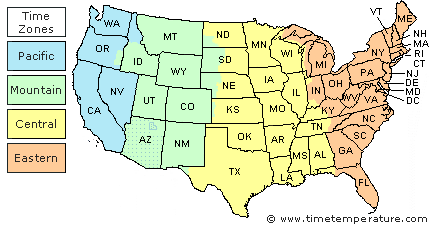This post is really designed for those who are interested behind the numbers of such things as dewpoint, earthquake/seismic calculations, and distances between cities.
I don't mean to 'wow' non-users of these calculations, but some of these formulae are quite lengthy.
I've worked with the calculations on my own and developed my own programs for their use.
For example, dewpoint has been a 'hot' issue lately. So many people are confused about the difference between humidity and dewpoint. Someone explained it to me this way:
Often when one hears the term humidity, it's referring to the
relative humidity, expressed as a percentage. However, dewpoint has been described as the
absolute humidity, a more accurate way of describing the amount of moisture in the air and is closely associated with temperature (as the following calculations will show).
Here are the factors at play in the dewpoint calculation...
Temperature expressed in Fahrenheit
Relative humidity expressed as a percentage
The dewpoint formula is based on temps expressed in Celsius; therefore the conversion from F to C is
5/9*(Temp F-32)
For every temperature expressed in Celsius is a corresponding
saturation vapor pressure for that particular temperature. For example, at 10 degrees C, the saturation vapor pressure is 12.27. Also, at 20 degrees C, the saturation vapor pressure is 23.34. Here is that calculation...
Saturation Vapor Pressure = 6.11*10^(7.5*Temp C/(237.7+Temp C))
The
actual vapor pressure is what will be used in determining the dewpoint. In order to do this, we must convert the
saturation vapor pressure to the actual vapor pressure by the following calculation...
Actual Vapor Pressure = Relative Humidity * Saturation Vapor Pressure/100; the relative humidity is expressed as a whole number percentage...i.e...30 percent, not 0.30.
After all of these conversions, we are now ready for the dewpoint calculation. But, remember, this will be expressed in degrees
Celsius. We'll convert into degrees Fahrenheit afterward.
Dewpoint = (-430.22+237.7*LN(Actual Vapor Pressure))/(-LN(Actual Vapor Pressure)+19.08)
The LN abbreviation is the natural log function.
Convert degrees C to F:
(9/5)*Dewpoint C+32
Let's use an example...
Temperature is 90 degrees F
Relative humidity is 52%
Convert F to C: 90 deg F = 32.22 degrees C
Saturation Vapor Pressure for 32.22 degrees C = 48.01
Actual Vapor Pressure (at 52%) = 24.97
Dewpoint = 21.09 degrees C
Dewpoint = 69.97 degrees F or 70 (rounded)
I will use other calculations in another post. Next, will be the heat index calculation.
Glossary
Saturation Vapor Pressure - The vapor pressure of a system, at a given temperature, wherein the vapor of a substance is in equilibrium with a plane surface of that substance's pure liquid or solid phase.
{Actual} Vapor Pressure - The partial pressure of water vapor in an air-water system.
Relative Humidity - A dimensionless ratio, expressed in percent, of the amount of atmospheric moisture present relative to the amount that would be present if the air were saturated. Since the latter amount is dependent on temperature, relative humidity is a function of both moisture content and temperature. As such, relative humidity by itself does not directly indicate the actual amount of atmospheric moisture present. See dew point.
Dewpoint - (Abbrev. DWPT) - A measure of atmospheric moisture. It is the temperature to which air must be cooled in order to reach saturation (assuming air pressure and moisture content are constant). A higher dew point indicates more moisture present in the air. It is sometimes referred to as Dew Point Temperature, and sometimes written as one word (Dewpoint).
MS








![[Image of 5-day forecast and coastal areas under a warning or a watch]](http://www.nhc.noaa.gov/storm_graphics/AT02/refresh/AL0211W5_NL_sm2+gif/203313W5_NL_sm.gif)


